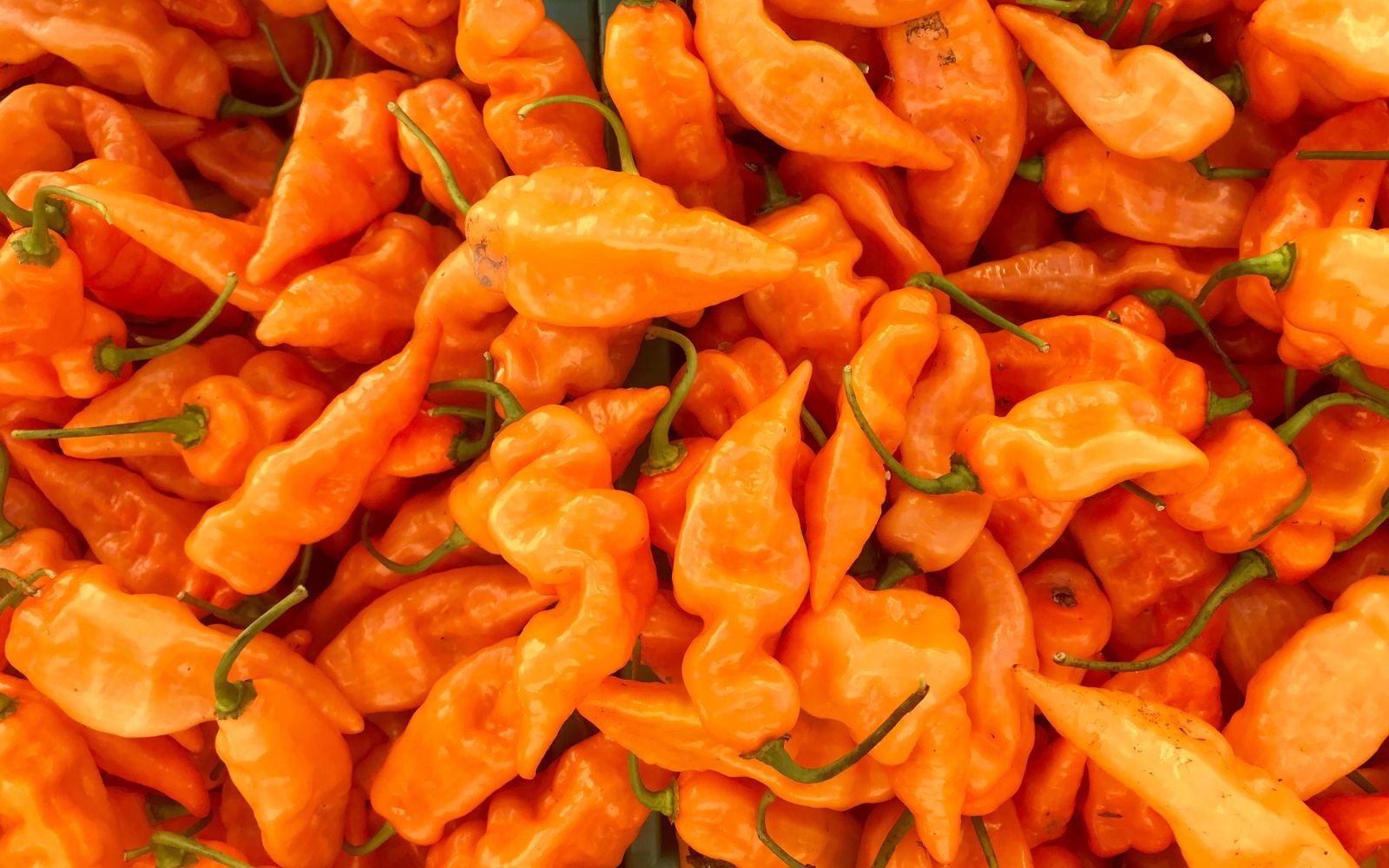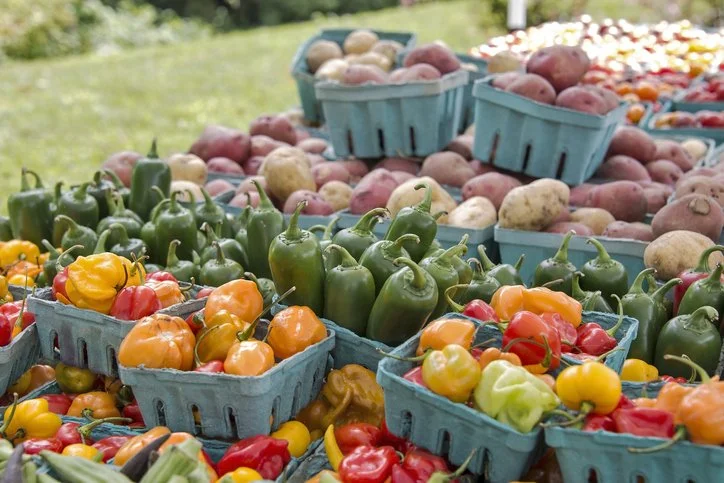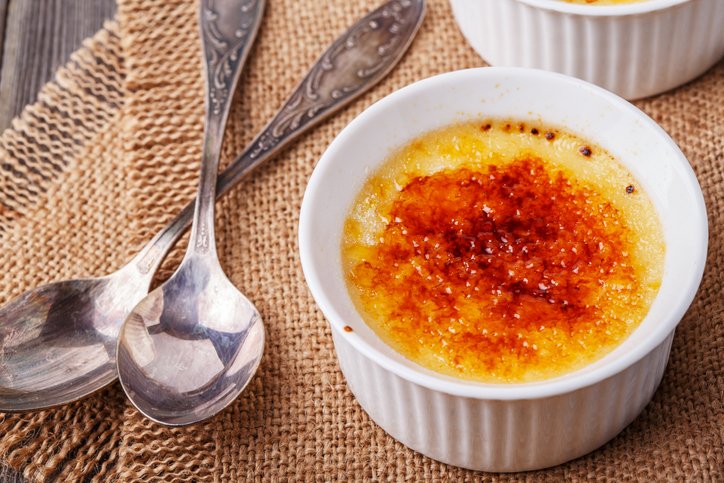What’s A Habanada? ALL the Habanero Flavor WITHOUT the Heat!
Discover > Texas Home Cooking > What’s A Habanada? ALL the Habanero Flavor WITHOUT the Heat!
What is a Habanada Pepper?
A Habanada is a new type of chili pepper that has all the flavor of habanero but without the searing heat. This makes it the perfect chili pepper for those who want to enjoy the flavor of a habanero without having their mouth set on fire! In fact, many people call this the heatless habanero! Its tangerine color gives it that signature habanero look but with a surprising sweetness underneath.
Habanadas were first developed by Michael Mazourek of Cornell University, one of the top organic plant breeders in the world, in the search for breeding peppers with the amazing tropical flavors of the habanero but without the searing heat.
Using non-GMO methods and only after 13 generations, he finally created a pepper strain that has all of the flavor of habanero peppers without the bite! The motivation for this? Well, Mazourek loves his peppers, and he was looking for a way to share the flavors that he loved to people who couldn't stand the heat of peppers.
If you are looking for a chili pepper that will add some serious flavor to your food without setting your mouth on fire, then Habanadas are the perfect choice. Give them a try in your next dish and you will be hooked!
Where can I Buy Habanada Peppers?
Just like many other peppers in Texas, habanada peppers can be found when the heat out and about! While this is a relatively new pepper variant, harvest season usually brings some vendors to your local farmers markets that grow this amazing pepper variant. Visit your local farmers market today to see if they
Habanada Pepper Flavor
When it comes to flavor, Habanadas are very similar to habaneros. They have a fruity, citrusy flavor that is slightly sweet with a touch of smoke. This makes them the perfect chili pepper for adding a punch of flavor to any dish. Personally, I love the taste of habanero peppers and finding out that a variety exists without the high Scoville counts is something that has turned my attention to this pepper.
If I were to write down the habanada pepper flavor notes, they would look like:
Super Sweet, even sweeter than many sweet peppers
Floral
Fruity and bright, pairs perfect with other fruits when made into sauce
NO Bite whatsoever! This may or may not be a good thing depending on what you like, but for those that like heat, I'd say go with the standard habanero, but for those that can't handle the heat, this is the perfect pepper!
Growing Habanada Peppers
If you are interested in growing your own habanada peppers, I have some great news for you. These peppers are incredibly easy to grow and don't require any special care. In fact, they can be grown just like any other chili pepper, and Texas is the perfect place for pepper growing! Just make sure that you give them plenty of sun and water and they will thrive.
Habanada peppers can be grown in both indoor and outdoor gardens. If you are growing them indoors, make sure to place them near a sunny window. These peppers love the sun and need at least 6 hours of direct sunlight each day.
Outdoor plants should be placed in an area that gets full sun. These peppers can tolerate a wide range of temperatures, so they are perfect for growing in most climates.
When it comes to soil, Habanada peppers prefer a well-draining soil that is high in organic matter. This can easily be achieved by mixing in some compost or manure into your garden bed before planting.
Once your plants are in the ground, make sure to water them regularly. These peppers love moisture and should be kept evenly watered throughout the growing season.
Overwatering can lead to root rot, so make sure that your soil is well-draining to avoid this problem.
If you live in an area with a lot of rain, you may need to water your plants less often.
Fertilizing your Habanada pepper plants is important for optimal growth and yields. I recommend using a balanced fertilizer that is high in nitrogen, phosphorus, and potassium.
Apply this fertilizer to your plants every 2-3 weeks throughout the growing season.
If you're more into organic fertilizer, then some vermicompost would even be better! For help with vermicomposting, we have expert vermicomposting help that you can find here.
Habanada Pepper Traits
The habanada pepper is classified as a mild chili pepper, but it packs a flavor punch that is out of this world. These peppers measure between 100-1,000 on the Scoville Scale, which is significantly lower than other chili peppers.
This makes them the perfect pepper for those that want flavor without the heat.
Habanada vs Habanero
The habanada pepper is often compared to the habanero pepper, and for good reason. These two peppers are very similar in appearance and flavor. The biggest difference between these two peppers is the amount of heat that they pack.
Habaneros are one of the hottest peppers in the world, measuring in at 100,000-350,000 on the Scoville Scale. This is significantly higher than habanadas, which only measure 100-1,000 on the Scoville Scale.
So, if you are looking for a pepper with all of the flavor and none of the heat, then the habanada pepper is the perfect choice for you.
Habanero peppers are known for their intense heat, while habanadas are known for their sweetness and habanero flavor. Both peppers have a fruity flavor, but the habanada is much sweeter. The habanero also has a smoky flavor that the habanada has, but not as pronounced due to its lack of heat.
What is the difference in heat between habaneros and habanadas?
Habaneros are one of the hottest peppers in the world, while habanadas are only mildly spicy. Habaneros measure 100,000-350,000 Scoville units on the Scoville Scale, while habanadas only measure 100-1,000 Scoville units on the Scoville Scale.
Which pepper is better for cooking?
That depends on the usage. For many, the habanada pepper is the better choice for cooking, as it will not add any heat to your dish. Personally, I like the habanero because of the heat, but to each his/her own!
How to Use Habanada Peppers for Your Recipes?
There are endless possibilities when it comes to using habanada peppers. These peppers can be used in any recipe that you would normally use a sweet pepper in.
Some of my favorite ways to use habanada peppers include:
Slicing them up and adding them to salads
Chopping them up and adding them to salsas and soups
Roasting them and adding them to sandwiches
Pickling them
Making habanada jelly
Snacking on them! They make exceptional snacking peppers.
Any recipe using spicy peppers but you don't want to add the spice to it, only the complexity of the pepper flavor!
If you've never tried it, try some habanada sherbet!
The possibilities are endless! If you can think of it, you can probably make it with a habanada pepper.
Other Non-Spicy Pepper Varieties in Recipes
If you are looking for other non-spicy pepper varieties, then you may want to try the following peppers:
Pimento Pepper: A sweet pepper that is often used in salads and dips.
Bell Pepper: One of the most popular peppers, bell peppers come in a variety of colors including green, red, yellow, and orange.
Sweet Banana Pepper: A sweet pepper that is often used in salads, sandwiches, and as a pickled pepper.
See what other peppers are in season in Texas here.
Quick and Easy Habanada Sherbet
Habanada sherbet is a refreshing, fruity treat that is perfect for summer. This stunning sherbet is made with habanada peppers, which are sweet and mild, making them the perfect pepper for this recipe.
This sherbet is easy to make and only requires a few ingredients. The habanada peppers give this sherbet a unique flavor that is out of this world. If you are looking for a delicious, summertime treat, then you need to try habanada sherbet!
Habanada Sherbet Ingredients:
1 cup habanada peppers, seeded and chopped
1 cup sugar
1 cup water
2 tablespoons lemon juice
1 teaspoon vanilla extract
1 pint heavy cream, chilled
1 quart ice cream, softened
Habanada Sherbet Directions:
1. In a medium saucepan over medium heat, combine the habanada peppers, sugar, and water. Cook until the sugar has dissolved and the mixture comes to a boil.
2. Remove from the heat and stir in the lemon juice and vanilla extract. Let cool to room temperature.
3. In a large bowl, combine the habanada mixture with the heavy cream and ice cream. Mix until well combined.
4. Pour into an ice cream maker and freeze according to the manufacturer's instructions. Serve immediately or store in the freezer for later.
Habanada Creme Brulee
Habanada creme brulee is a unique twist on the classic dessert. This dish is made with habanada peppers, which are sweet and mild, making them the perfect pepper for this recipe.
The habanada peppers give this creme brulee a unique flavor that is out of this world. If want to surprise your guests with something that is truly unique (and Texan!) then a creme brulee made out of habanada peppers is something to consider!
Habanada Creme Brulee Ingredients:
1 cup habanada peppers, seeded and chopped
1 cup heavy cream
1/2 cup sugar
6 egg yolks
1 teaspoon vanilla extract
Habanada Creme Brulee Directions:
1. Preheat the oven to 325 degrees F.
2. In a medium saucepan over medium heat, cook the habanada peppers in the cream until they are soft. Remove from the heat and let cool slightly.
3. In a large bowl, whisk together the sugar, egg yolks, and vanilla extract.
4. Add the cooled habanada pepper mixture to the egg mixture and mix until well combined.
5. Pour the mixture into 6 ramekins.
6. Place the ramekins in a large baking dish and fill the dish with enough water to come halfway up the sides of the ramekins.
7. Bake for 30-35 minutes, or until the custards (how long do custards last?) are set.
8. Remove from the oven and let cool slightly. Serve with a dollop of whipped cream and enjoy!
Have you tried this amazing pepper before? Let us know in the comments below! Here's another pepper that's in season that's not your normal pepper, shishito peppers!
Got extra hot peppers? Here's our hot sauce (how long does hot sauce last?) fermentation guide to help you make the most of them.
Still craving that hot flavor? Check out our list of artisan spice and sauce producers in Texas!







